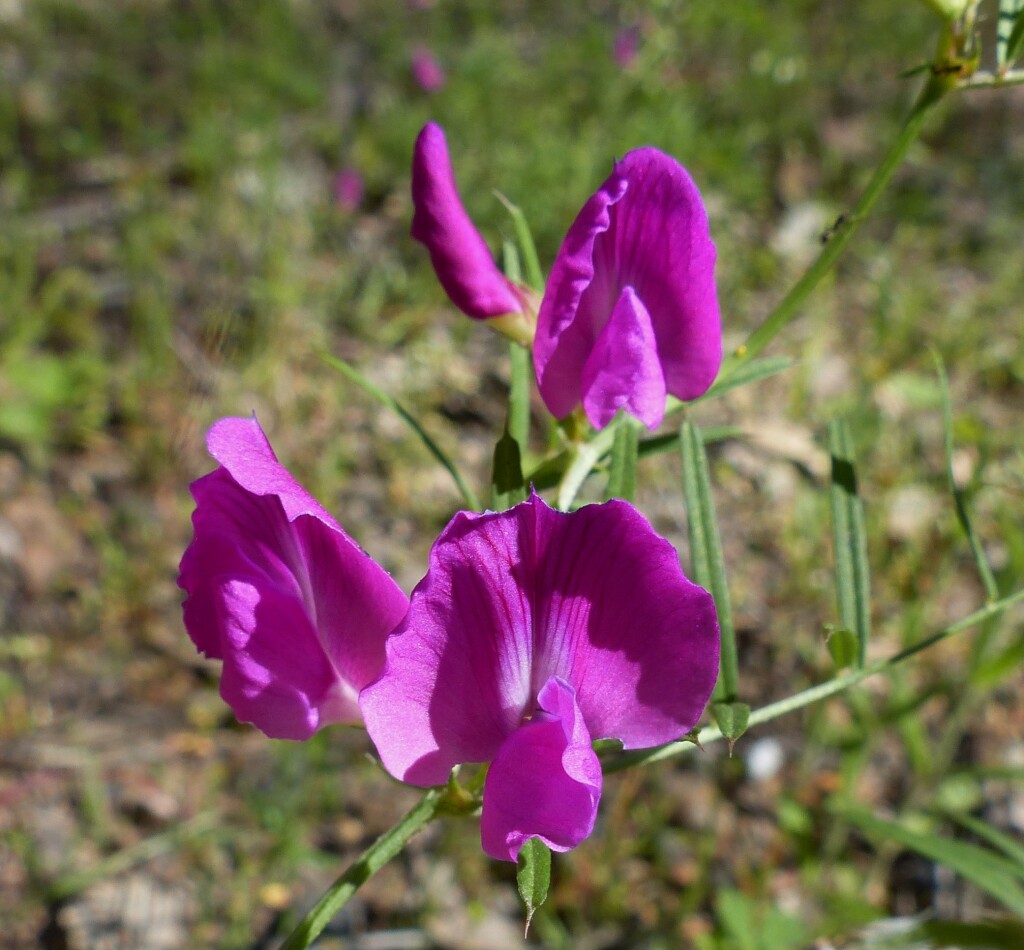Vicia sativa
L. Common VetchClimbing or decumbent annual herb, pubescent or glabrescent; stems to 1 m long. Leaves 2–10 cm long excluding the simple or pinnate tendril; leaflets 4–18, variable, oblong to obovate, 5–40 mm long, 1–15 mm wide; stipules semi-sagittate, 3–8 mm long, dentate, with an ovate, yellowish central gland. Flowers 1–4, subsessile; calyx cylindric, 7–20 mm long, appressed-pilose or glabrescent, teeth subulate, subequal, shorter or longer than calyx tube; corolla 9–30 mm long, crimson, violet or pink; standard obovate to suborbicular, slightly longer than wings or keel, limb often shorter than claw; wings and keel not usually dark-tipped. Pod oblong, 2.5–8 cm long, 3–12 mm wide, compressed, yellow-brown to black, glabrous or pubescent; seeds 6–12, subglobose, 2–7 mm long, compressed, light or dark brown, often mottled. (1–2-seeded subterranean fruits sometimes present.)
LoM, MuM, Wim, GleP, Brid, VVP, VRiv, RobP, MuF, GipP, OtP, WaP, Gold, CVU, GGr, DunT, NIS, EGL, EGU, WPro, HSF, HNF, OtR, Strz, MonT, VAlp.
A polymorphic species, 5 subspecies generally recognised, but some authors recognising as many as 7 (Wiersema et al. 1990; Sell & Murrell 2009); the 3 subspecies naturalised in Victoria are native to southern Europe and south-west Asia.
Jeanes, J.A. (1996). Fabaceae. In: Walsh, N.G.; Entwisle, T.J., Flora of Victoria Vol. 3, Dicotyledons Winteraceae to Myrtaceae, pp. 663–829. Inkata Press, Melbourne.
 Spinning
SpinningSell, P.; Murrell G. (2009). Flora of Great Britain and Ireland. Cambridge University Press, United Kingdom.




